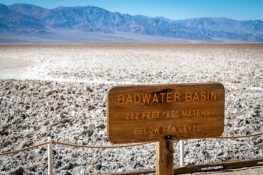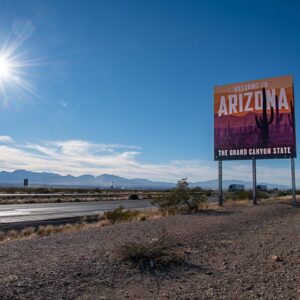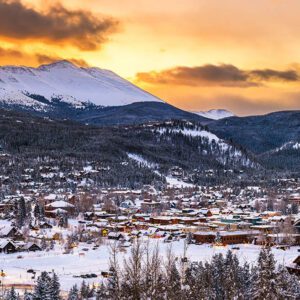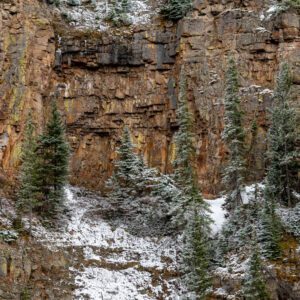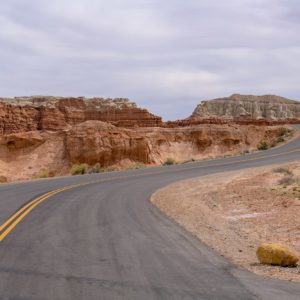Gates of the Arctic National Park and Preserve

Image via Wikipedia
Geography and Landscape
The park is situated entirely above the Arctic Circle, featuring a diverse landscape that includes towering mountain ranges, vast tundra, glacially carved valleys, and pristine rivers. The Brooks Range dominates the park, with peaks rising over 7,000 feet. The landscape is marked by dramatic contrasts, from lush river valleys teeming with wildlife to high alpine passes covered in snow year-round.
The park is home to six designated Wild and Scenic Rivers: the Alatna, John, Kobuk, Koyukuk, Noatak, and Tinayguk. These rivers flow through some of the most remote and scenic parts of the park, providing lifelines for both wildlife and adventurous paddlers.
Exploration and Discovery
Gates of the Arctic was officially designated a national park in 1980, but human exploration of the region dates back thousands of years. The land has been inhabited by Indigenous groups such as the Nunamiut, Koyukon Athabaskans, and Gwich’in for generations. They navigated the landscape through deep knowledge of animal migration patterns, seasonal changes, and natural resources.
The modern era of exploration began with early European and American explorers in the 19th and early 20th centuries. Robert Marshall, a pioneering wilderness advocate and writer, played a significant role in bringing attention to the area’s pristine beauty. In the 1930s, Marshall traveled extensively through the Brooks Range and referred to two prominent mountains—Frigid Crags and Boreal Mountain—as “the gates” to the Arctic wilderness. His writings and advocacy helped lay the foundation for the park’s eventual protection.
The region remains one of the least explored national parks due to its vast and difficult terrain. Most visitors who embark on journeys into Gates of the Arctic rely on bush planes to fly them deep into the park, where they begin multi-day expeditions that demand self-sufficiency and survival skills. The true exploration of the park comes not from trails or mapped routes but through personal discovery of its raw and ever-changing landscapes.
Unique Features of the Park
The Brooks Range
The Brooks Range runs through the heart of the park, creating an imposing barrier of rugged peaks that separate Alaska’s Arctic tundra from the boreal forests to the south. This mountain range has been shaped over millions of years by geological forces and glaciation, resulting in sharp ridges, expansive valleys, and deep-cut river gorges. The range provides vital habitat for Dall sheep, grizzly bears, and caribou.
The Arrigetch Peaks
One of the most dramatic landscapes within the park, the Arrigetch Peaks, is a collection of jagged granite spires rising abruptly from the tundra. These towering formations, sculpted by glacial activity, attract experienced climbers, photographers, and adventurers looking for one of the most breathtaking locations in the Arctic. The name “Arrigetch” comes from the Inupiat language, meaning “fingers of the outstretched hand,” an apt description of the towering rock formations.
The Gates: Frigid Crags and Boreal Mountain
Named by Robert Marshall, these twin peaks stand at the entrance to the Koyukuk River Valley. Rising like two sentinels, they create a symbolic passage into the Arctic wilderness. The area around these mountains is home to diverse wildlife and serves as an important migration route for caribou.
Wild and Scenic Rivers
Gates of the Arctic is home to six federally designated Wild and Scenic Rivers, which flow freely through some of the park’s most remote and untouched areas. These rivers offer pristine conditions for paddling, fishing, and wildlife viewing. The Noatak River is particularly notable, as it is one of the longest undammed rivers in North America, stretching over 400 miles from the Brooks Range to the Chukchi Sea.
Midnight Sun and Northern Lights
Because the park is located above the Arctic Circle, it experiences unique natural phenomena. During the summer months, the sun never fully sets, creating a surreal landscape bathed in continuous daylight. Conversely, in the winter, the region is enveloped in darkness for months at a time, offering one of the best opportunities to witness the aurora borealis in a pristine Arctic setting.
Vast, Untouched Tundra
The tundra is a defining feature of the park, stretching for miles in all directions. Covered in mosses, lichens, and low-lying vegetation, the tundra supports a diverse range of wildlife despite the extreme conditions. In autumn, the tundra transforms into a vibrant carpet of red, orange, and gold, creating one of the most spectacular landscapes in Alaska.
Conclusion
Gates of the Arctic National Park is not just a destination—it is an experience of unfiltered, unspoiled wilderness. It is a land of extremes, where visitors must navigate without trails, face unpredictable weather, and embrace solitude in one of the last remaining frontiers of the world. For those seeking a true adventure, the park offers the ultimate challenge and reward: an intimate encounter with the Arctic’s untamed beauty.
Nearby Locations:
Lists & Guides Including Gates of the Arctic National Park and Preserve
Maps & Directions:
Get Driving Directions:
Gates of the Arctic National Park and Preserve, Airport Rd
Bettles, Alaska 99726
This time, it's OK to leave a trace (Review)
There are no reviews yet. Be the first one to write one.
